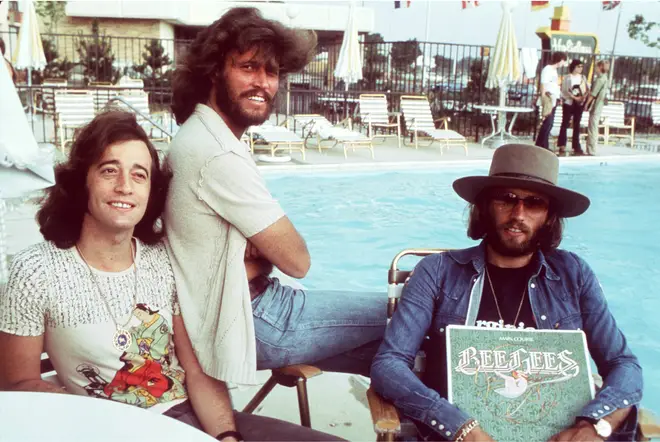In the mid-to-late 1970s, the Bee Gees were untouchable. Barry, Robin, and Maurice Gibb dominated the airwaves with their soaring harmonies and signature falsettos. Songs like “Stayin’ Alive,” “How Deep Is Your Love,” and “Night Fever” didn’t just top the charts—they defined an era. When Saturday Night Fever hit theaters in 1977, it turned the brothers into global superstars, selling millions of records and making disco a cultural phenomenon. For a brief, dazzling moment, the Bee Gees were kings of the music world.
But fame can be a fragile crown. By 1979, the disco boom had reached a breaking point. Radio stations that once played Bee Gees hits on repeat began to distance themselves, fearing the backlash against the overexposed genre. The infamous “Disco Demolition Night” in Chicago that same year became the ultimate symbol of the cultural shift—where disco records were destroyed in a baseball stadium as crowds cheered, and the music that had once united dance floors suddenly became a target of ridicule.
Caught in the storm were the Bee Gees, who overnight went from being celebrated hitmakers to symbols of a genre that America decided it wanted to forget. They were mocked, shunned by rock radio, and even faced public hostility. Despite having one of the most successful streaks in music history, they were forced into the shadows, their talent overshadowed by the stigma of disco.
Yet, beyond the headlines, the brothers never stopped writing music. They penned hits for Barbra Streisand, Dionne Warwick, and Kenny Rogers, quietly proving that their genius extended far beyond the dance floor. In time, the world would remember the Bee Gees not as pariahs, but as survivors—artists whose melodies outlasted the fleeting anger of a cultural backlash.
Today, when we hear “How Deep Is Your Love” or “Too Much Heaven,” it’s not the controversy we remember, but the beauty of the music itself—a reminder that true artistry always endures, even after the spotlight fades.
